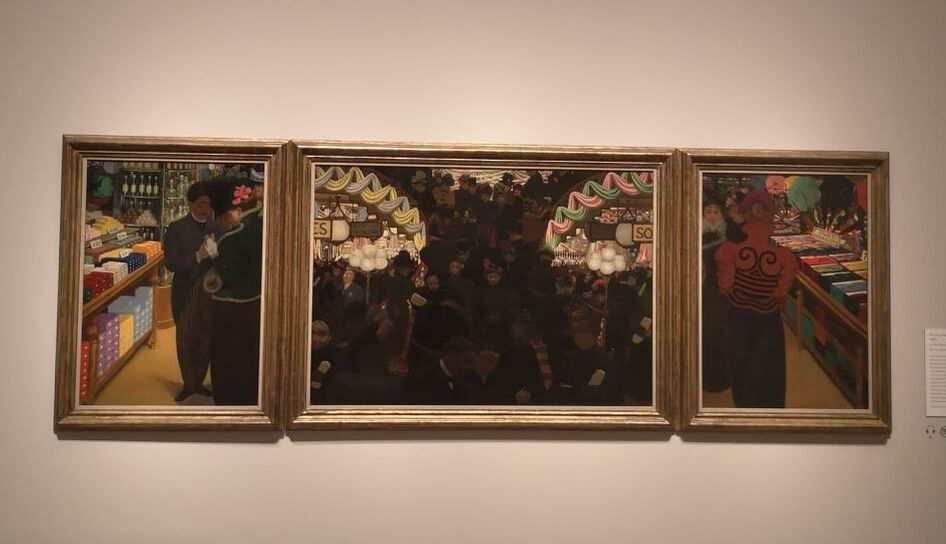 Not so much a review as a retrospective as it closed on 29th September, but this week I am talking about the Felix Vallotton exhibition that recently finished at the Royal Academy and had the slightly over ominous subtitle of a painter of disquiet. So who is Vallotton. Swiss, moved to France, 19th Century, part of a group of painters not cool enough to hand with the impressionists, or Matisse and those lot. On the surface Vallotton' paintings have the appearance of being boringly factual, if well done and highly colourful. The above painting, a triptych of a department store is just such an example. As I was photographing it, I was altered by a guard that this was the one painting with a sign saying no photographs. Too late though, and I'm not sure why and I am fairly sure Mr Vallotton's copyright in this painting has lapsed so I present it for your view anyway. On one level this is a very pleasing highly coloured painting of a department store. It is slightly more interesting than that as triptych's are almost always religious in some way, and this is one of few examples I have seen that departs from that. I also like the way he has in the flanking paintings, extracted the individual, from the bustling crowd in the centre. This slightly off kilter way of depicting and looking at things makes Vallotton interesting, and if you were to stretch it, could justify the title of the show. I don't think that a painter, to be good and interesting, has to be doing anything particularly radical or subversive. The very famous ones often are (Turner, Monet, Picasso etc) often are but sometimes you just have to be good (Constable) or have a slightly different way of looking at things to make it art worth seeing. Indeed I think the, I like that but I don't know why, or, that's pretty reactions are prime examples of art being successful. Which is a long winded way of saying that I like Vallotton's still life paintings (above) just because they are good. Let me tell you why. With the peppers (above left), well they look delicious. They arranged well to get a nice negative space, and they are painted with strong vibrant colours, with a supreme level of accuracy. The way the light catches them is very effective. Putting them on the, by the way very detailed, marble table which slightly reflects back the colours, and the over the gray background really lifts them. The final touch though that makes this very good is the knife, with its slab of red on the end. This could be one of two things. It is either a reflection of the pepper above it, or it has been used as a pallette knife and has just been left, with a slab of paint, sitting in the picture. Of course it could be both. The other purpose of still life is to show off. Traditionally how they were often used, and Vallotton does the classic, look at the surfaces I can do spiel with his carafe of water and box ensemble (above right). The way the different textures of light and shade are captured, particularly in the water is very impressive. The show is arranged more or less chronological but I am not going, but now we deal with people. He does a good interior does Vallotton and he always put a slight spin on it. A prime example of this is the Sick Girl (top left) . Vallotton is quite good at doing in motion poses, which are not easy to do. He used photography to paint from later in life but I wonder if he did it here, or made it up. It gives a sense of dynamism, of a scene interrupted. And of course there is a bottle of water and elements from the still life that he does so well. Much more staged and replete with classical illusion is this painting of women bathing (above right) it is very different in style to the other interior and has some very strange elements such a the central figure is holding a green shriveled head. The shaft of red across the centre makes for a good contrast to the greens and breaks up the foreground to the background. While I was there a very tall serious looking woman dressed all in white was taking close up shots of all of the boobs. It is, to a certain extent, that kind of painting. There are some very sexy nudes later in the show, but you can't include everything in a blog and a post mainly of boobs would be a bit weird. Sexual mores appear frequently in this show. There is a whole series of prints dedicated to them, although I have to say I find the prints some what un-engaging. More interesting are these series of paintings, often with a dominating colour, with some dubious sexual encounter heavily implied. As in the one above left, where you have these shadowy figures, clutched in an awkward embrace, at the threshold to this clashing red room. It is very odd, made particularly so with the well placed flashes of other colour such as the yellow flowers in their blue post on the mantle piece. It is painted in distemper on cardboard. Now then, a note to curators. Instead of waffling on about what the picture shows us, we can see that by you know looking at the picture, perhaps tell us about how it was painted. I had never heard of distemper before. A quick google search revealed it is a canine disease, which is an odd thing to paint with. In a similar style but going heavy on the shadow are a couple of by lamplight paintings which appear in the next room. They are beguiling but they are bit like too moody tv programmes in that you can see so little its a bit off putting. Nice lampshades though. A nice trick with paintings is having the action framed by an internal device, and doorways are excellent at this. They give you the viewer more of the sense that you are there looking in on the action. There are two excellent examples of this, one bathed in light (above left) and the other darkness (above right). The fact that the figure has their back to us helps emphasise the peeping tom aspect of the whole thing. As does the dishevled sheets in the one on the left. As with the other paintings the level of detail and rendering is superb, and again you have people in motion.
It is however an interesting image. A much more delicate usage of gold is in these dancing figures (Above left). Swirling around in this field of gold. I particularly like the face in the bottom left. She gives the feeling that you are one of the dancers. There is a tremendous sense of motion, and I like the fading of the figures into the ground. I really like this painting. Odd landscapes make a reappearance but these last two are much more effective. Again there is an apparent simplicity to them with these ribbons of colour, and having landscapes at night. You don't see them very much, dawn and dusk sure but not at night. This allows the two elements that I really like in these paintings. In the one above left it is the blossom on the tree, catching and reflecting the light. In the one on the right it is the golden glow on the clouds and reflected in the ribbon of water underneath. Very nice.
We are back in the RA next week for Anthony Gormley.
0 Comments
Leave a Reply. |
Archives
June 2024
Categories |
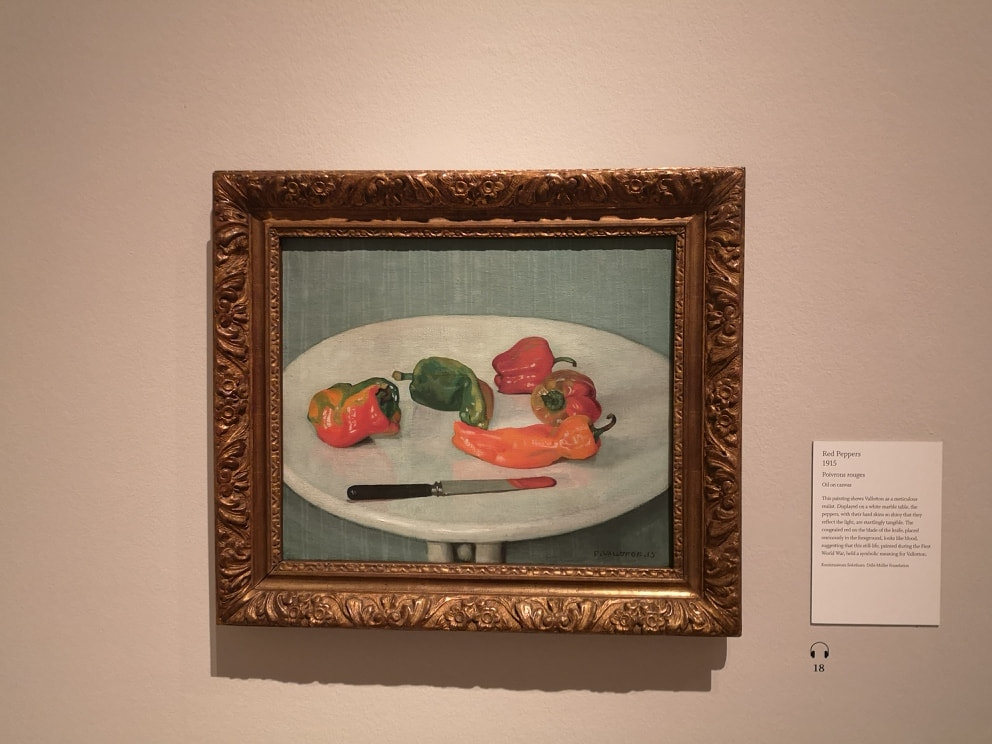


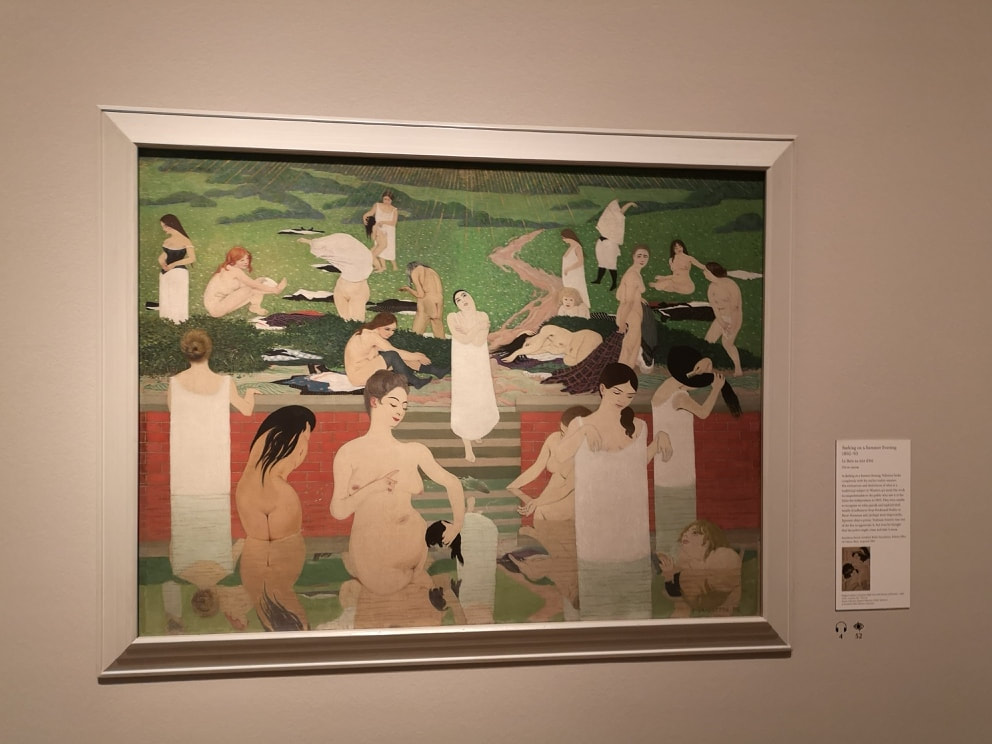
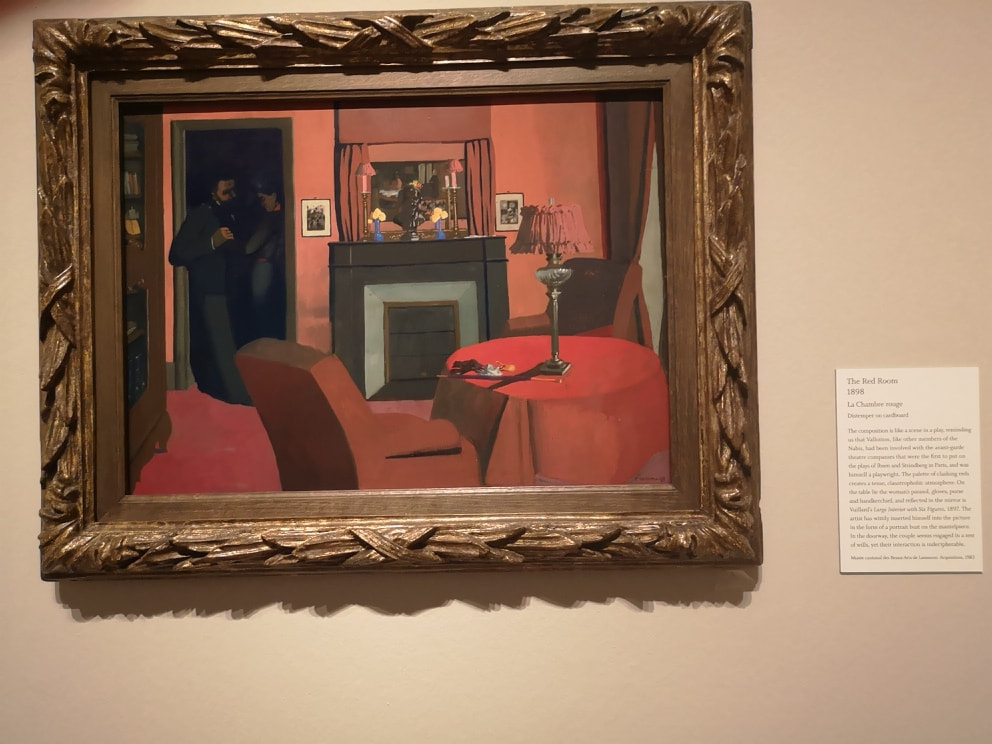
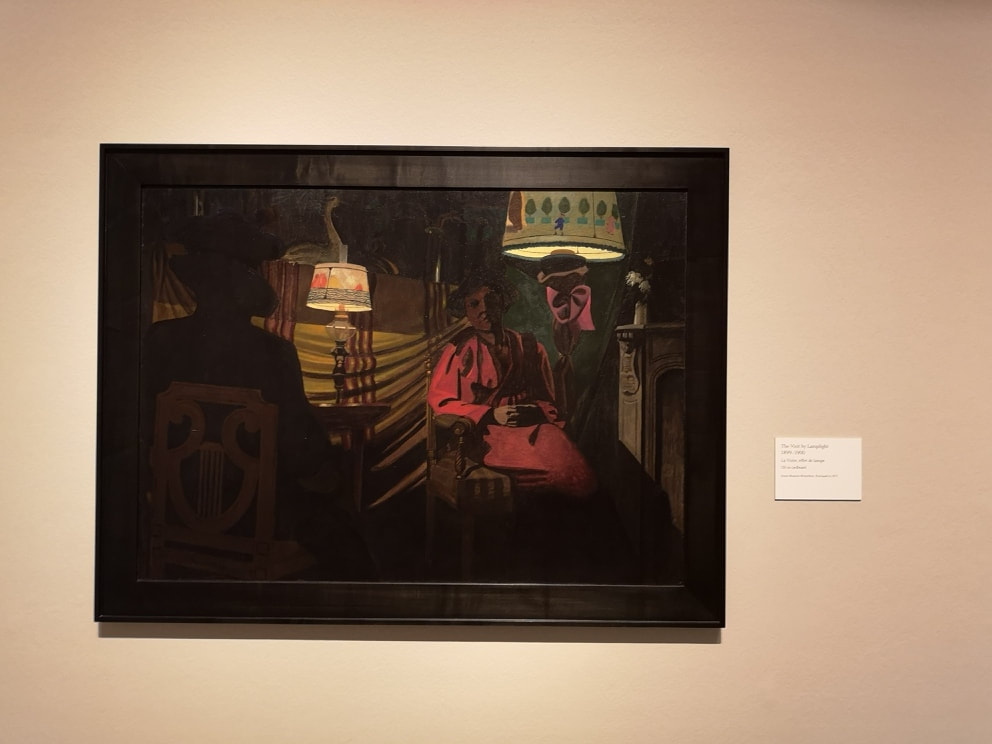
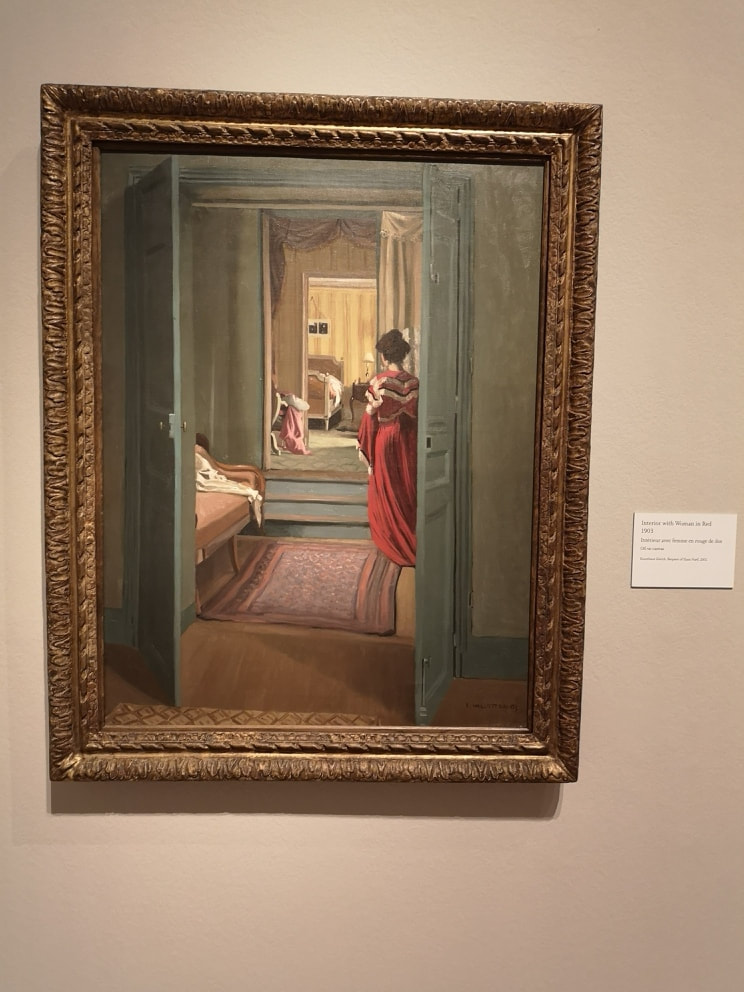
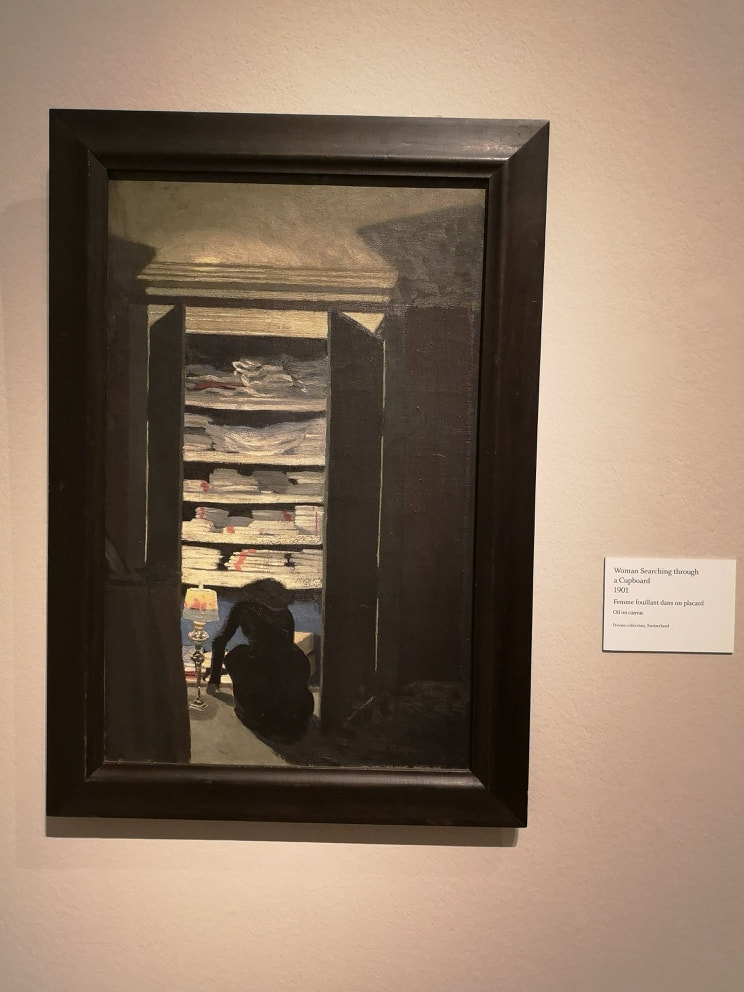

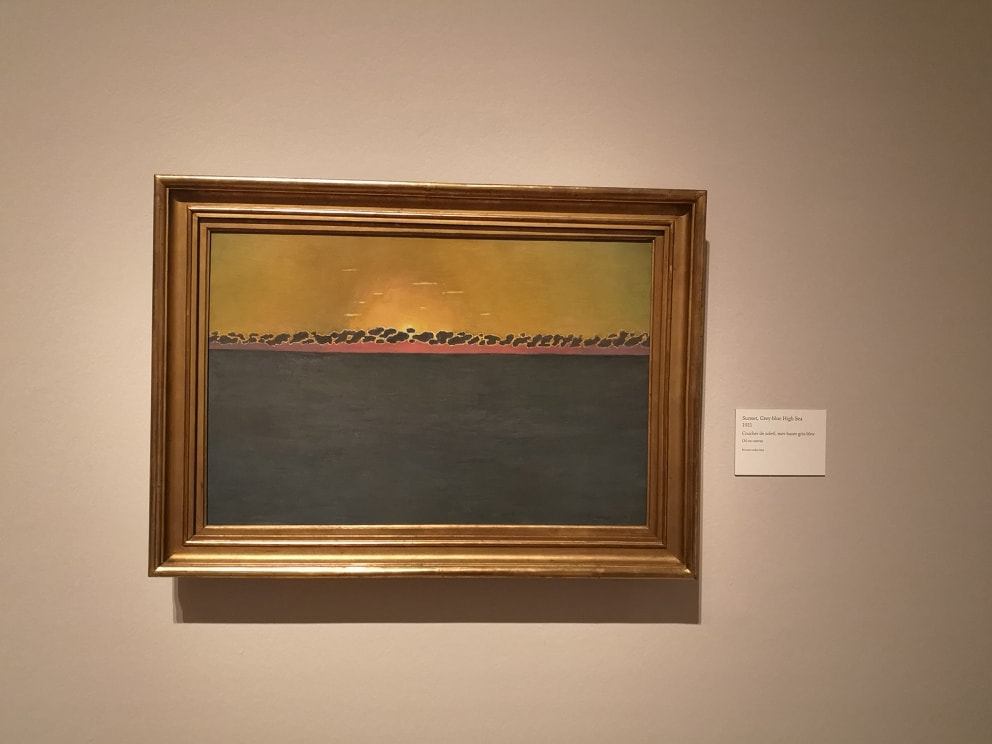
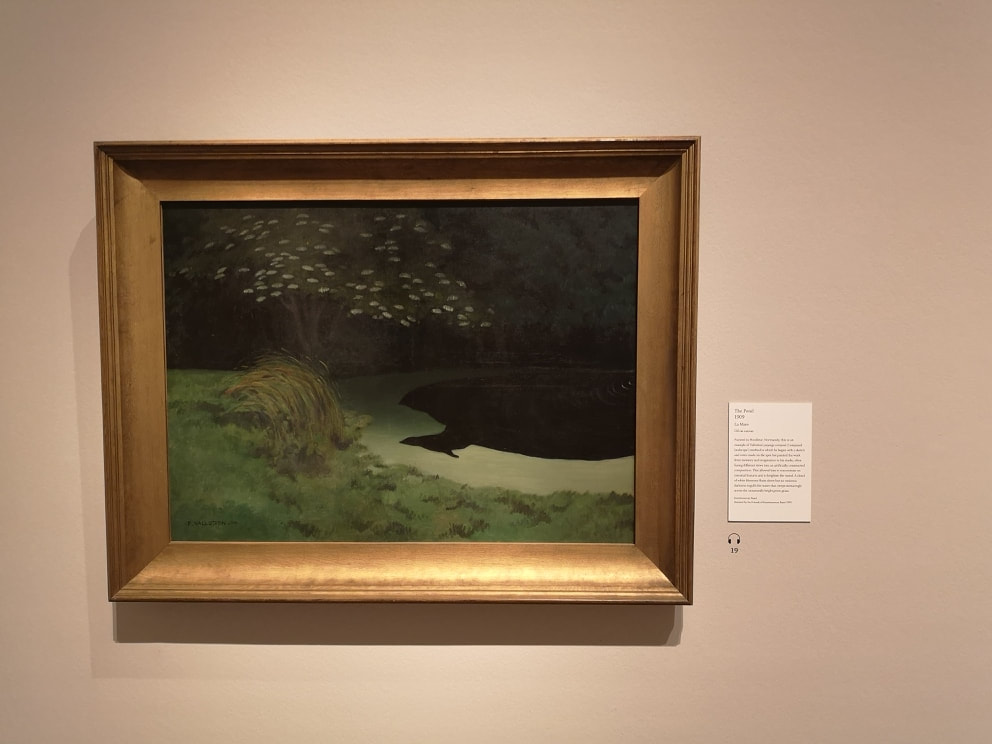

 RSS Feed
RSS Feed